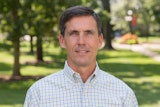Last week, the National Science Foundation’s congressionally mandated advisory group on issues of diversity—the Committee on Equal Opportunity in Science and Engineering (CEOSE)—hosted the second of two discussions between committee members and NSF leadership concerning the agency’s proposed Comprehensive Broadening Participation of Undergraduates in Science, Technology, Engineering, and Math or STEM (CBP-US) program.
CEOSE members first heard about CBP-US at their March 2010 meeting during which (then) NSF Director Dr. Arden L. Bement and (now) Acting Director Dr. Cora Marrett presented a plan to eliminate the agency’s stand-alone programs designed for minority-serving campuses (i.e., HBCU-UP and T-CUP) as well as one directed at institutions with significant minority student populations (LSAMP).
In their place, the NSF has proposed a comprehensive, competitive grant model that will force Historically Black Colleges and Universities, Tribal Colleges and Universities, and Hispanic Serving Institutions (HSIs) to compete with one another and with predominantly White institutions for the same pot of programmatic funds. At both the March and June meetings, many CEOSE members voiced major concerns over the consolidation plan, rightfully arguing that the move would disadvantage those institutions with the most robust history of serving underrepresented populations.
The plan to consolidate three well-established programs (one of which has undergone a formal evaluation that resulted in positive outcomes for minority students in STEM) is not only problematic in its design; the process by which it was conceptualized negates NSF’s commitment to utilize CEOSE as a forum for advice and guidance.
The plan further disregards hard-fought legislation, via the 2007 America COMPETES Act, authorizing NSF to establish a STEM capacity building program similar to HBCU-UP but for HSIs.
Yet what is most distressing is that the NSF—an agency scientific in its orientation—has presented a plan with little to no empirical basis as to why a consolidated program will serve the nation’s underrepresented students in ways better than what is currently in place.
When the question of evidence was raised on the floor of the most recent CEOSE meeting, NSF leadership pointed to scholarly and think tank literature on effective STEM education practices.
While I most certainly applaud this effort, identifying best practices in isolated settings does not translate into a breadth of understanding that is needed to reform STEM higher education with the intent of producing more degrees for underrepresented groups. A rationale for why a consolidated effort will improve student outcomes is needed.
It is next problematic that this proposal comes under an administration that places great emphasis on research-based decision-making and a commitment to STEM education as a means of securing the nation’s economic future and advancing our competitiveness abroad. Despite these priorities, we are lacking an overarching dialogue on how proposed and enacted STEM education-focused legislation will be complementary, and not simply additive, in its implementation.
How does the NSF proposal, for example, augment or detract from the $2.55 billion allocated for education programs at minority-serving institutions (MSIs) via section 2103 of the 2010 Health Care and Education Reconciliation Act (HCERA)? While many readers know about this forthcoming influx of funds for the MSI community, they may not know that the language in this section of the bill specifically states that such programs are to include those that “help low-income students attain degrees in the fields of science, technology, engineering, or mathematics.”
Beyond HCERA, there is STEM-specific language embedded in the Department of Education’s Race to the Top and i3 Investing in Innovation competitive grant programs, as well as portions of the administration’s blueprint for Elementary and Secondary Education Act reauthorization.
STEM education-specific language is of course also present in the 2010 America COMPETES Act Reauthorization as passed by the House in May of this year. The diversity provisions of the act call for increased outreach by federal agencies, including NSF and the Department of Energy. ‘
Where is the broader dialogue?
At a time when the administration is placing great focus on STEM education for a diverse scientific and technological workforce, fragmented policymaking is no longer acceptable. Also unacceptable is policymaking void of hard evidence.
Not with an administration that is rightfully pushing the American education system to be innovative in its approach, reform-minded in its decision-making, rigorous in its evaluation, and evidence-based in its action.
Dr. Lorelle L. Espinosa is the director of policy and strategic initiatives at the Institute for Higher Education Policy, a Washington, D.C.-based independent, nonprofit organization that is dedicated to increasing access and success in postsecondary education around the world.
















